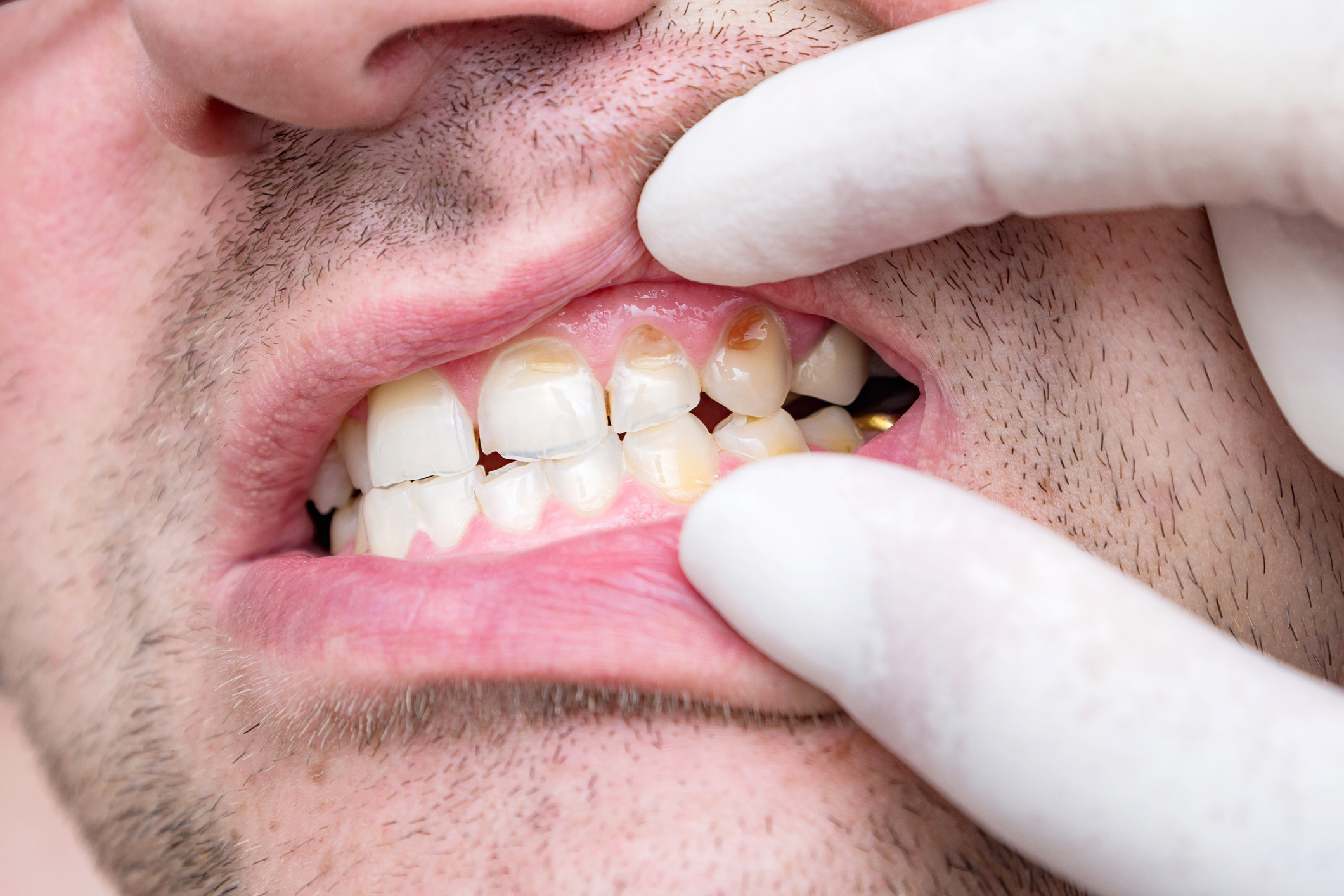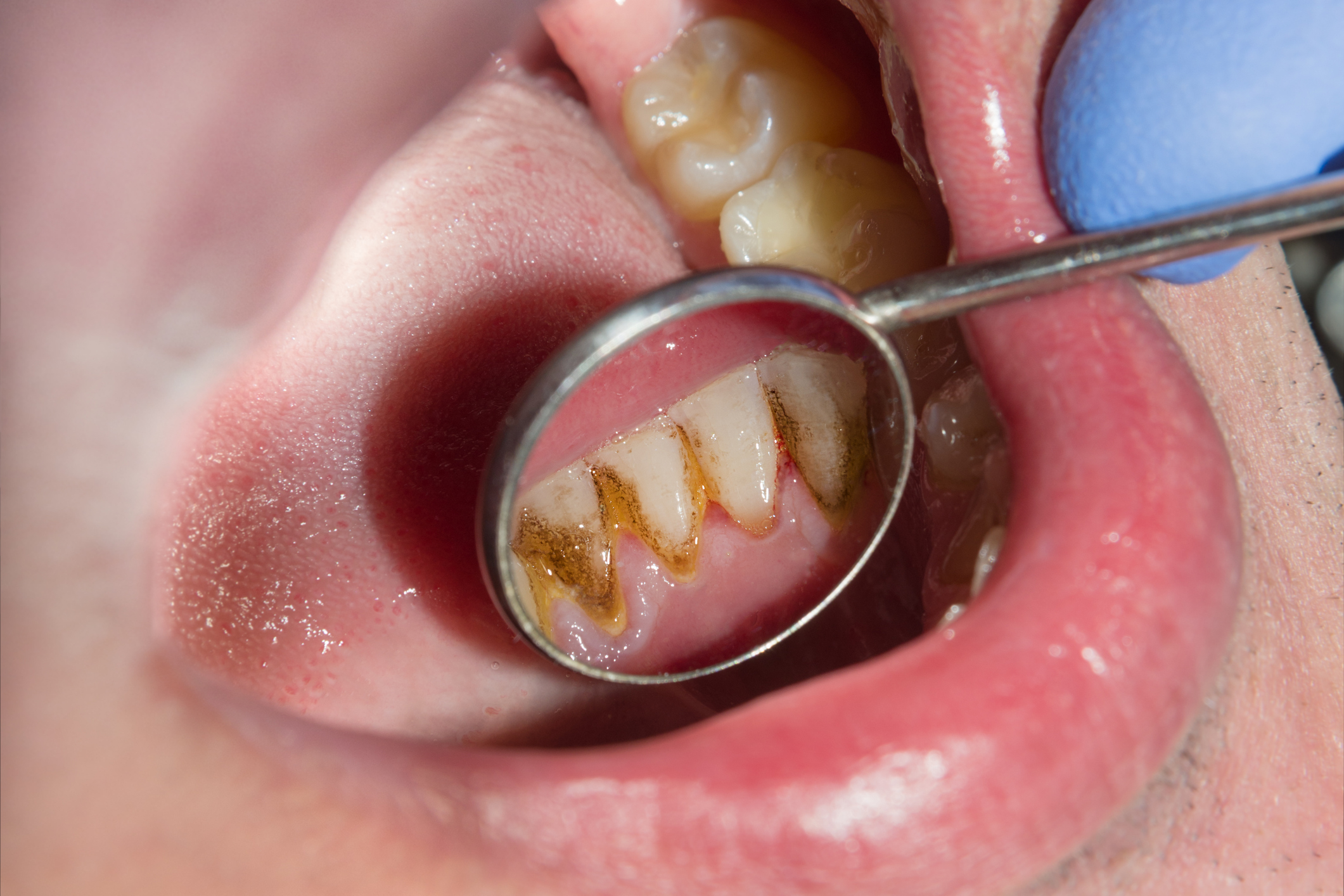The most destructive bacteria for Colombian gums has been discovered: it's present under the gums and leads to the destruction of dental tissue.

Although its name sounds like something out of a microbiology textbook, Porphyromonas gingivalis is well known to dentists. This tiny but relentless bacterium has been identified as the primary cause of gum destruction and impaired immune defenses in Colombian patients with periodontitis, a silent disease that can lead to complete tooth loss.
The discovery was made possible through research conducted by Yineth Neuta Poveda, a master's student in Bioinformatics from the National University of Colombia (UNAL), who analyzed the genetic makeup of the bacteria that live beneath the gums. Her study identified more than 200 different species in patients with periodontitis and determined that P. gingivalis is the most aggressive.

This bacteria can be linked to diseases such as diabetes or heart problems. Photo: iStock
Periodontitis, experts explain, can be compared to an organized invasion inside the mouth. Hundreds of microorganisms coexist there, some cleaning and others repairing, but when conditions change—due to poor hygiene or an overreaction of the immune system—veritable "microbial bands" appear, destroying the structures that support the teeth.
For decades, scientists have attempted to identify these microscopic attackers using traditional culture methods. However, most oral bacteria don't grow outside the body, keeping much of this invisible universe out of reach of researchers.
“The difference between old methods and bioinformatics tools is abysmal,” explains Neuta Poveda. “With cultures, we can identify about 10 bacteria per test; with bioinformatics, nearly 300 species or genera, thanks to DNA analysis.”

The findings pave the way for patient-tailored treatments. Photo: iStock
The discovery was made possible through genetic sequencing, a technique that allows the bacteria's code to be directly read. Instead of observing them under a microscope, researchers read the genes, which function as unique fingerprints. One of them, the 16S rRNA gene, acts as a kind of bacterial "identification card."
Using data available in international databases—such as SILVA, HOMD, and KEGG—the researcher analyzed millions of DNA fragments using bioinformatics programs capable of comparing and classifying genetic information in a matter of hours. “It was like sorting through a huge word search where each word represents the DNA of a different bacterium,” she explains.
The results were revealing: among more than 200 species detected in Colombian patients, Porphyromonas gingivalis emerged as the most destructive. It releases enzymes that degrade gums, manipulates natural defenses, and creates an inflammatory environment that facilitates disease progression.
But it doesn't act alone. It's joined by Tannerella forsythia, Treponema denticola, Filifactor alocis, and Fretibacterium fastidiosum , bacteria that form cooperative communities in which some perforate tissue, others eliminate defenses, and others feed on the released collagen. Together, they create an ideal ecosystem for periodontitis to progress.

The study positions the country at the forefront of precision dentistry. Photo: iStock
The analysis also identified differences between healthy individuals and patients with periodontal disease. In healthy mouths, microorganisms coexisted in a balanced manner and with moderate metabolic activity. In contrast, in affected samples, a veritable "chemical factory" of enzymes was observed, degrading proteins, generating inflammation, and transporting energy to sustain the infectious process.
“Periodontitis has multiple causes and depends on the oral environment. We all have potentially harmful bacteria, but they're not always activated. Factors such as poor hygiene or genetic predisposition can trigger their action,” the researcher emphasizes.
These findings are key to modern dentistry, as they allow for personalized treatments based on the predominant bacteria in each patient. In the future, an "oral DNA test" could even be developed that would determine the risk of periodontitis before symptoms appear.
Although the bacteria identified were already known to science, their analysis in the Colombian context is novel. Until now, no one had described in such detail the genetic composition of the subgingival microbiota—the set of microorganisms that live beneath the gums—in the country's population.
To reach these conclusions, the researcher used QIIME2 software, which cleans and organizes millions of DNA fragments into unique genetic fingerprints. She then compared them with global databases of oral bacteria such as SILVA and HOMD, determining the presence and abundance of each species.

The discovery was made using genetic sequencing and DNA analysis tools. Photo: iStock.
He then applied the PICRUSt2 tool, which not only identifies bacteria but also their metabolic functions. By cross-referencing the data with KEGG and MetaCyc databases, he was able to predict which microorganisms produced destructive enzymes or inflammatory compounds.
Studying oral bacteria, Neuta explains, also provides information about the body's overall health. Periodontitis doesn't just stay in the gums: inflammatory substances can travel through the bloodstream and be linked to diseases such as diabetes, heart problems, or even Alzheimer's.
The discovery, in addition to contributing to scientific knowledge, opens new avenues for prevention and early diagnosis. Under the computer microscope of bioinformatics, the mouths of Colombians reveal an invisible universe where a single bacterium— Porphyromonas gingivalis —can be the spark that ignites inflammation and puts overall oral health at risk.
Environment and Health Journalist
eltiempo





